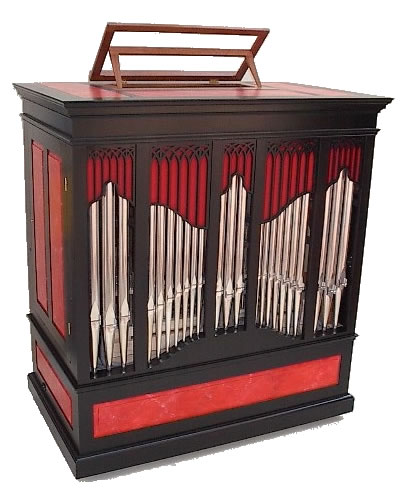
 The Baroque Era was full of surprises from music. One of the composers that I was interested in though was Johann Pachelbel. Johann Pachelbel was born in 1653 at Nuremberg, Germany. He was born into a middle class family. Pachelbel was baptized September 1. When Pachelbel was going through early life he started receiving musical training from Heinrich Schwemmer who was a musician and music teacher, and later in life a cantor of St. Sebaldus Church. Pachelbel received his education from St. Lorenz Hauptschule and Auditorio Aegediano in Nuremberg. Later in life, in June 29, 1669 he became a student at the University of Altdorf and became the appointed organist of St. Lorenz church. Due to Pachelbel's money problems he had to leave the university in under a year. He had to become a scholarship student at the Gymnasium Poeticum where he was permitted to study music outside of the Gymnasium Poeticum, and got a new teacher by the name of Kaspar Prentz. Prentz left for Eichstätt in 1672, and by 1673 Pachelbel was staying in Vienna, and he became the deputy organist at the famous Saint Stephen Cathedral for the next five years. In 1677, Pachelbel moved to Eisenach, and became a court organist for Kapellmeister Daniel Eberlin. While there in Eisenach he met members of the Bach family, and became Johann Ambrosius closest friend. In June 1678, Pachelbel was employed as organist of Predigerkirche in Erfurt. Pachelbel remained in Erfurt for 12 years and established his reputation as one of the leading German organ composers. Pachelbel married twice while he was in Erfurt, first to Barbara Gabler only for her and their only son to die to the plague two years later, and second to Judith Drommer, ten months after his first wife died. They had five sons and two daughters. Two of the sons, Wilhelm Hieronymus Pachelbel and Charles Theodore Pachelbel, also became organ composers. He left Erfurt and found a job in a town called Gotha as the town organist, a post he occupied for two years, starting on November 8, 1692. While he was there he published his only music collection called Acht Chorale zum Praeambulieren in 1693. His teacher Georg Caspar Wecker died on April 20, 1695 went and played for the funeral leaving Erfurt. Pachelbel lived the rest of his life in Nuremberg and published the chamber music collection Musicalische Ergötzung, and, most important, the Hexachordum Apollinis a set of six keyboard arias with variations. In 1706, Johann Pachelbel died and was buried on March, 9. Works included in this link.
The Baroque Era was full of surprises from music. One of the composers that I was interested in though was Johann Pachelbel. Johann Pachelbel was born in 1653 at Nuremberg, Germany. He was born into a middle class family. Pachelbel was baptized September 1. When Pachelbel was going through early life he started receiving musical training from Heinrich Schwemmer who was a musician and music teacher, and later in life a cantor of St. Sebaldus Church. Pachelbel received his education from St. Lorenz Hauptschule and Auditorio Aegediano in Nuremberg. Later in life, in June 29, 1669 he became a student at the University of Altdorf and became the appointed organist of St. Lorenz church. Due to Pachelbel's money problems he had to leave the university in under a year. He had to become a scholarship student at the Gymnasium Poeticum where he was permitted to study music outside of the Gymnasium Poeticum, and got a new teacher by the name of Kaspar Prentz. Prentz left for Eichstätt in 1672, and by 1673 Pachelbel was staying in Vienna, and he became the deputy organist at the famous Saint Stephen Cathedral for the next five years. In 1677, Pachelbel moved to Eisenach, and became a court organist for Kapellmeister Daniel Eberlin. While there in Eisenach he met members of the Bach family, and became Johann Ambrosius closest friend. In June 1678, Pachelbel was employed as organist of Predigerkirche in Erfurt. Pachelbel remained in Erfurt for 12 years and established his reputation as one of the leading German organ composers. Pachelbel married twice while he was in Erfurt, first to Barbara Gabler only for her and their only son to die to the plague two years later, and second to Judith Drommer, ten months after his first wife died. They had five sons and two daughters. Two of the sons, Wilhelm Hieronymus Pachelbel and Charles Theodore Pachelbel, also became organ composers. He left Erfurt and found a job in a town called Gotha as the town organist, a post he occupied for two years, starting on November 8, 1692. While he was there he published his only music collection called Acht Chorale zum Praeambulieren in 1693. His teacher Georg Caspar Wecker died on April 20, 1695 went and played for the funeral leaving Erfurt. Pachelbel lived the rest of his life in Nuremberg and published the chamber music collection Musicalische Ergötzung, and, most important, the Hexachordum Apollinis a set of six keyboard arias with variations. In 1706, Johann Pachelbel died and was buried on March, 9. Works included in this link. Sources Include- http://en.wikipedia.org/wiki/Johann_Pachelbel#1653.E2.80.931674:_Early_youth_and_education_.28Nuremberg.2C_Altdorf.2C_Regensburg.29
http://www.pachelbel.us/




